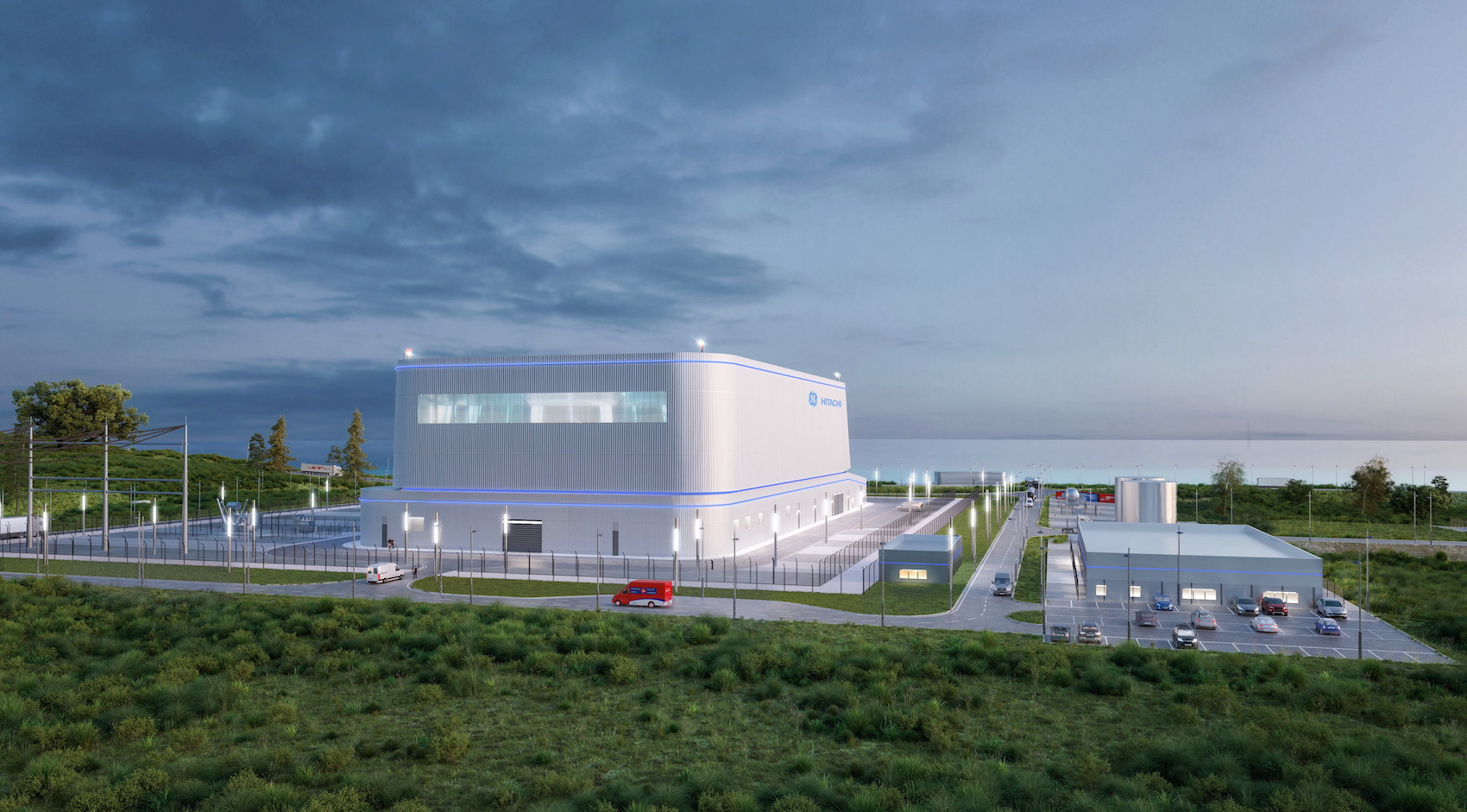Like most countries, the United Kingdom is making swift moves to try to reduce carbon emissions and increase energy security through wind, solar, and other renewables. And as in many other countries, nuclear energy is set to play a large role. The nation already gets about 15% of its electricity from nuclear, and aims to triple its capacity to 24 gigawatts (GW) by 2050, which would cover some 25% of its future electricity needs, all while retiring older gas-cooled nuclear plants. To reach that goal, Britain aims to bring on a new, advanced generation of nuclear reactors, among them the BWRX-300 small modular reactor (SMR) designed by GE Hitachi Nuclear Energy.
Last month, GE Hitachi (GEH) came one big step closer to bringing its BWRX-300 to the country when it announced that it has submitted a Generic Design Assessment (GDA) entry application for the reactor to the U.K.’s Department for Business, Energy and Industrial Strategy (BEIS). This process allows U.K. regulators to assess the safety, security, and environmental protection of new nuclear power plant designs.
“The UK government believes that SMRs could play an important role alongside large nuclear as a low-carbon energy source to support a secure, affordable decarbonised energy system,” according to a January 2023 policy paper from the BEIS. “SMRs are smaller in size and could use modular, off-site manufacturing for flexible deployment.”
Britain’s goal to give nuclear power generation a bigger presence in its energy mix is part of a “Ten Point Plan for a Green Industrial Revolution” that was introduced in 2020, to address energy security and climate change.
“We believe the BWRX-300 is the ideal technology to help the U.K. meet its decarbonization and energy security goals,” said Sean Sexstone, executive vice president for advanced nuclear at GE Hitachi. “Regulatory agencies in Canada and the U.S. are collaborating on their licensing review of the BWRX-300. Through the GDA process, we look forward to engaging U.K. regulators and enabling collaboration with their global counterparts.”
An SMR is defined as a reactor that produces up to 300 megawatts of electricity. These small reactors are expected to be deployable faster than large conventional ones and at a lower cost per unit of output.
Global interest in the BWRX-300 continues to increase. In late 2021, Ontario Power Generation selected GE Hitachi as technology partner for a grid-scale SMR that could begin providing carbon-free energy to the grid by the end of the decade. And last June, Saskatchewan’s SaskPower selected the BWRX-300 for potential deployment in the mid-2030s.
Poland ORLEN Synthos Green Energy has announced its intention to deploy at least ten BWRX-300 SMRs in that country by the early 2030s. And Sweden’s Kärnfull Next, the first project development company to focus on SMRs in Scandinavia, has signed an exploratory memorandum of understanding with GE Hitachi regarding its BWRX-300 design.
Also in 2021, the Tennessee Valley Authority ratified an initiative to explore advanced nuclear technology to help it reach its decarbonization goals. Its New Nuclear Program aims to provide up to $200 million to “examine advanced reactor technology options for potential, future deployment” at its Clinch River site in Tennessee.
GEH was supported in its preparation of the British GDA entry application by Jacobs U.K. Ltd., which has supported licensing applications for new nuclear power plant projects in the U.K. since 2007. “Our work with GEH on this application will progress our joint aim of ensuring the U.K.’s energy security and building a more connected and sustainable world,” said Dawn James, vice president for nuclear power at Jacobs.
